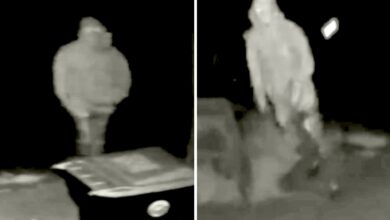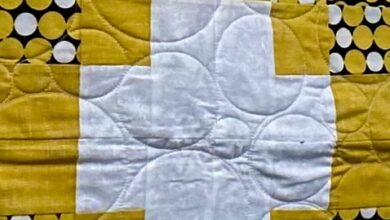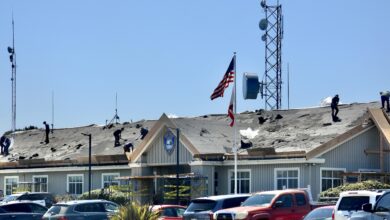Changes coming to Inglenook Dunes Preserve
Land once planned as the site for the dream house of a local hotelier is about to become the newest addition to MacKerricher State Park.
Those 65 acres of new park lands, new habitat for an endangered species and a new document on the removal of the old haul road are among the changes for MacKerricher.
The federal Fish and Wildlife Service has released a Final Rule on the Designation of Critical Habitat for the tidewater goby, identifying new areas for protection in several California coastal counties, including Mendocino. The Ten Mile River is now designated as critical habitat, along with Virgin and Pudding creeks. What this means to the park, and the area, is still being sorted out.
Meanwhile, California State Parks wants to spend $750,000 to battle invasive species and remove 2.7 miles of remnants of the haul road between Ten Mile Bridge and Ward Avenue, plus two culverts.
The plan has generated local opposition. State Parks exempted itself from the California Environmental Quality Act (CEQA), but that was before the opposition and the designation of new habitat for the goby.
In March, Caltrans and State Parks created a new draft biological assessment of the project and are now circulating it to other government agencies. It does not create any new public hearings. The document can be seen at ftp://ftp.parks.ca.gov/..
Land in escrow
At the top of the priority list for State Parks” land acquisition in the Northern California region is hotelier Robert Hunt”s 65 acres. The Highway 1 frontage, which climbs to dunes is found just south of the Ten Mile Bridge, west of Highway 1. The purchase would increase the Inglenook Dunes Preserve within MacKerricher to 1,350 acres.
State documents show that escrow is set to close this month on the state purchase of land that was still offered for sale this week on the open market with Big River Realty at $649,00, half what it was initially listed for by Big River.
Hunt”s property includes 15 acres of flat, developable land where a large home could be cloaked in privacy and spectacular sunsets. A short lane to the site is developed, lined with cypress trees. A well was installed.
Hunt, whose late parents spent decades in the Fort Bragg hotel business, has owned hotels all over the West, including Alaska and several in Idaho. He owned the Hi-Seas motel across from Airport Road on Highway 1 in Fort Bragg when it burned in 2007. At the time, Hunt planned to rebuild it as Fort Bragg”s first condo hotel. But then came the financial collapse.
Hunt could not be reached for comment for this story.
He had planned to build a 7,000-square-foot home on the site and spent about $50,000 getting ready, confirmed David Coddington, of Big River Realty. Coddington said Hunt had met all conditions and had all the approvals lined up, but then conditions were changed because the house could be seen from the beach. Hunt then put the property on the market, where it has been for five years.
He now is ready to see the property preserved, Coddington said. It is common practice for real estate firms to list property for sale until the day final escrow clears.
More than a decade ago, local activists defeated a plan to put a hotel on the property across the street from this parcel.
Future use
One thing that came up when this reporter contacted the Wildlife Conservation Board was the statement that the property is being used by trespassers to access MacKerricher State Park. This was also brought up by others seeking to use grant and federal money to acquire Hunt”s land.
However, a walk-through last weekend showed a few beer cans and stuff blown from the road. The only path into the property had the skeleton of a sheep across it, undisturbed for quite a long time by any humans. It was clear there had been no dune buggies on the property.
“The boundary between the site and the natural preserve at MacKerricher State Park is not well defined,” said an item from the agenda of the California State Public Works Board, which also revealed the land is in escrow with an April expected closing date. “Purchasing the site and eliminating this private in-holding is expected to make it easier for Parks to protect the existing park from trespassing (in particular recreational dune buggy riders) and other illegal uses,” the agenda states.
Roy Stearns of State Parks said, “As for a threat to the property, there is none now, but when we find inholdings like this, surrounded by existing park property, we like to close purchase to further secure the park boundaries against any future development that might come along. It makes security for the property easier.”
Federal grant
The Wildlife Conservation Board did not respond to California Public Records Act requests for information about a $15,000 federal grant apparently to study the possible acquisition made while the property was already in escrow.
Phone calls and emails were made beginning before the March 11 Wildlife Conservation Board meeting where the federal grant was approved. Staff at the WCB said they could not discuss the action beyond the agenda, which has only the barest outline of information.
No further information was forthcoming from the WCB, despite Public Records Act requests.
Caltrans owns seven acres along Highway 1 that fronts a portion of the Hunt property and State Park land. Caltrans has stored enormous piles of dirt, rocks and gravel on the property. In 2008, State Parks said it would like to acquire that Caltrans property for increased access to the old Haul Road, which the same agency now wants to remove.
Stearns said the new land is not planned as another public entrance to MacKerricher.
“No, we have no plans for another entrance through this property,” Stearns said. “As for ease of patrolling, yes, our folks already drive by that property daily as they watch over the rest of the property, so adding this will not put any added or extraordinary demands on security.”
Tidewater goby
It”s unclear how the new goby habitat designation might impact the old haul road removal or gravel operations on Ten Mile River.
The tidewater goby is a small, gray-brown fish rarely exceeding 2 inches in length. Male tidewater gobies are nearly transparent with a mottled brownish upper surface. Female tidewater gobies develop darker colors often black on the body as well as on the dorsal and anal fins.
The fish lives about one year and occurs in lagoons, estuaries, marshes and coastal streams.
Their status as endangered has been controversial because they are abundant in some places.




